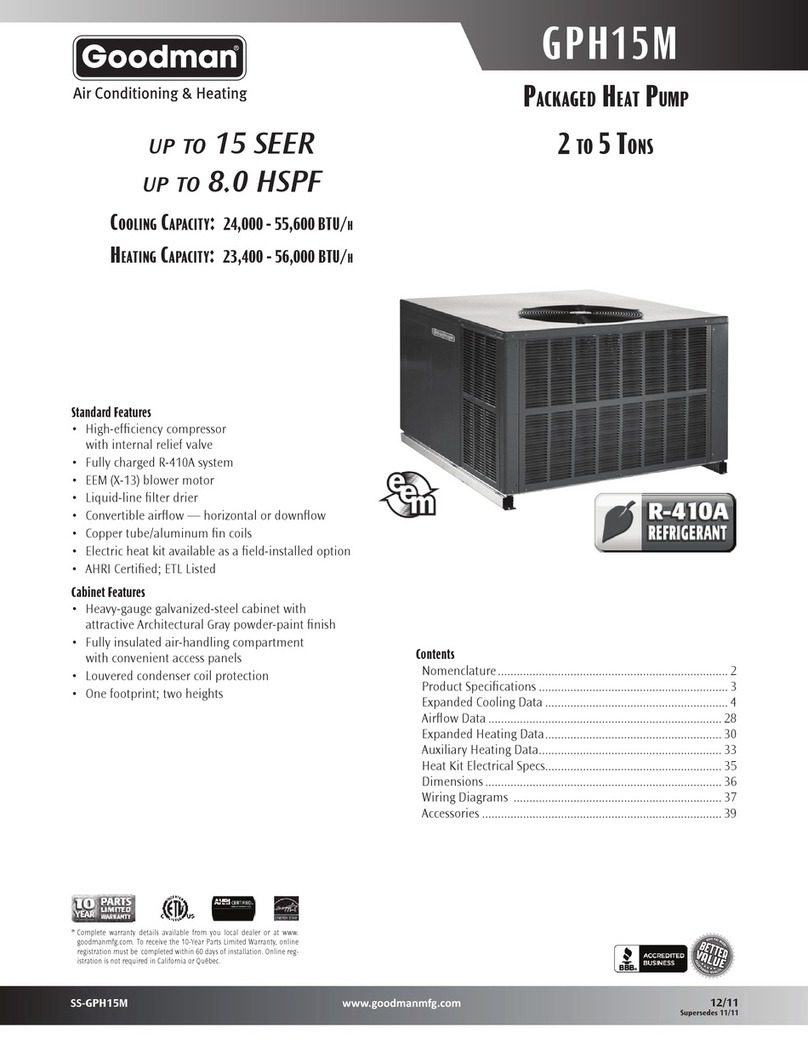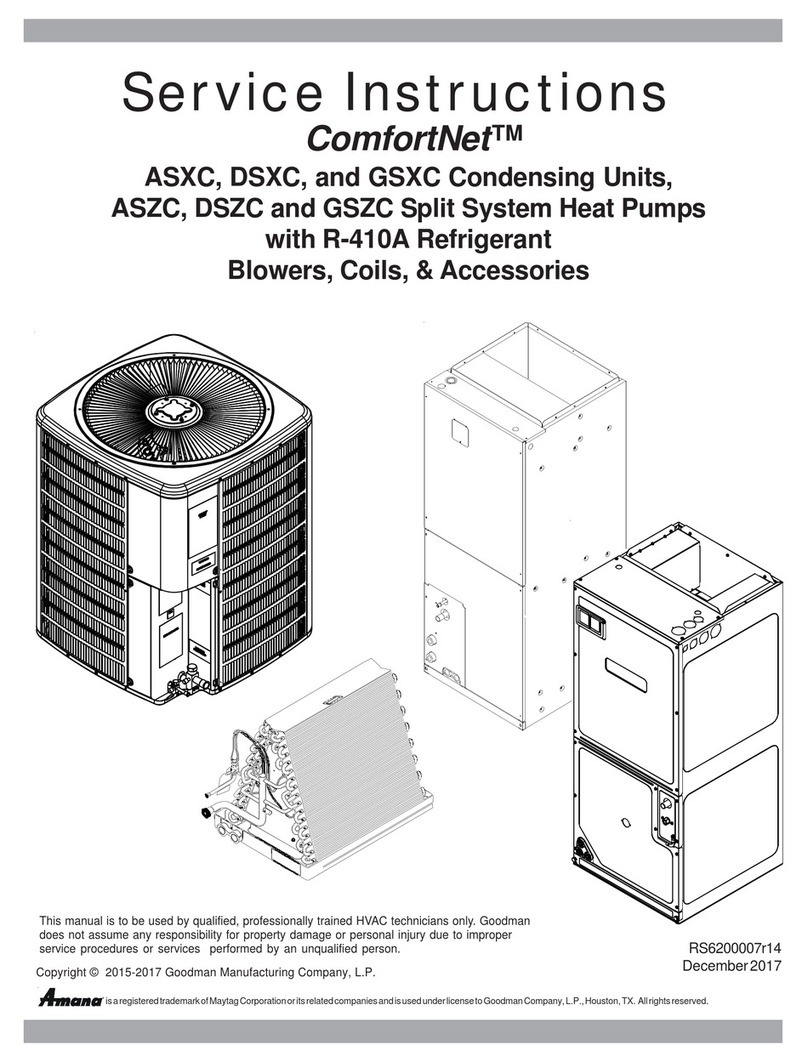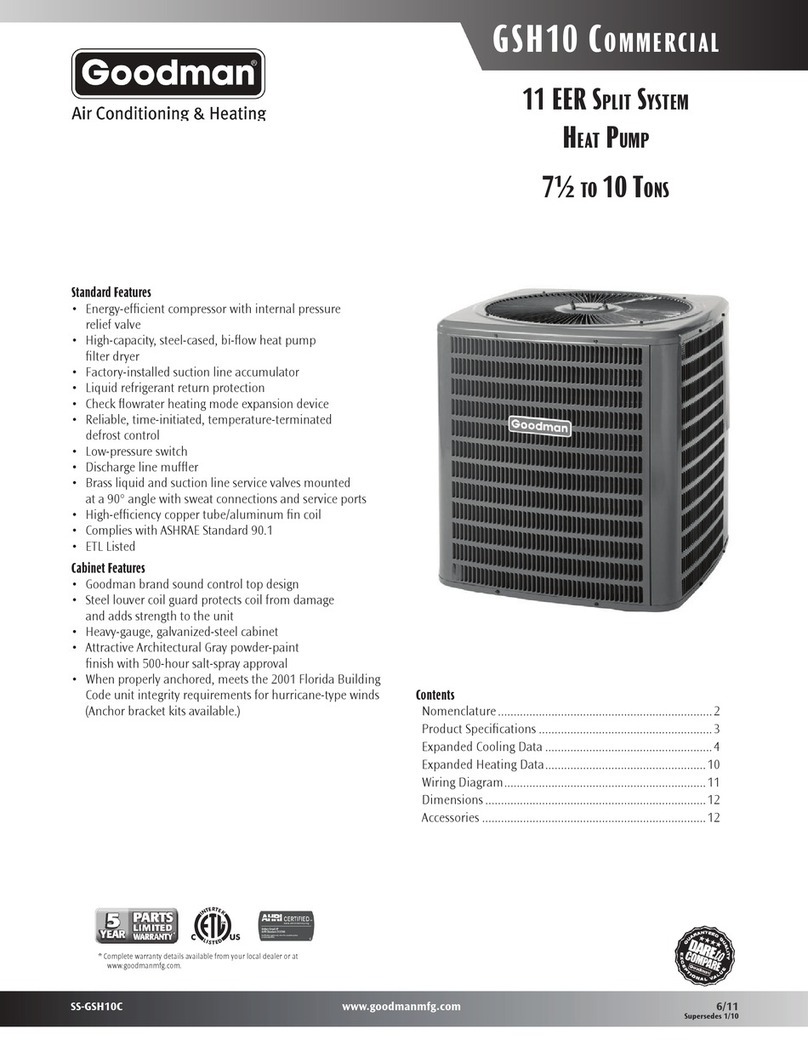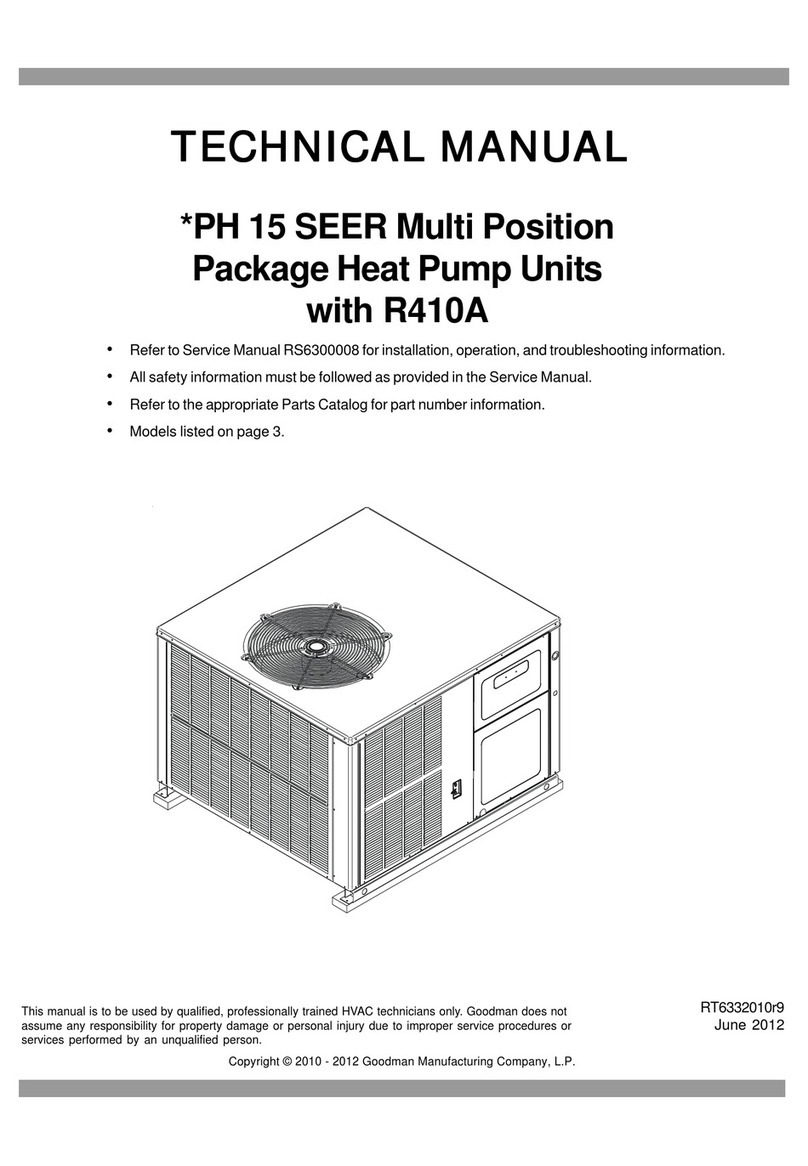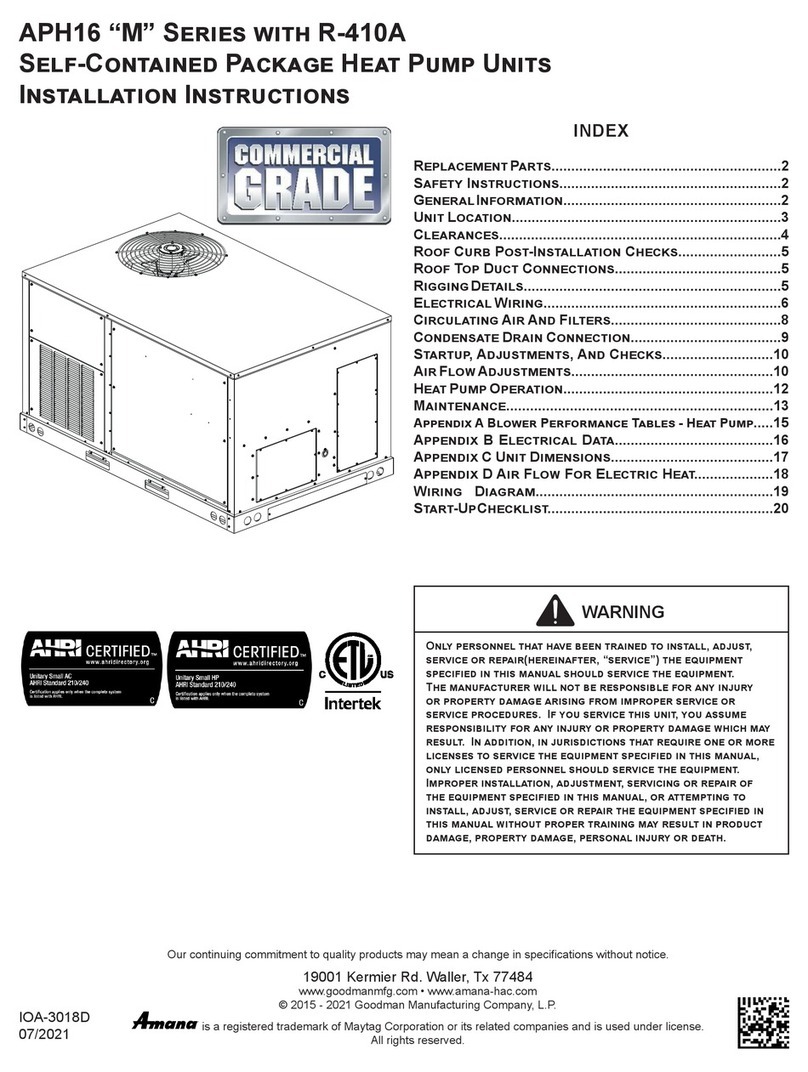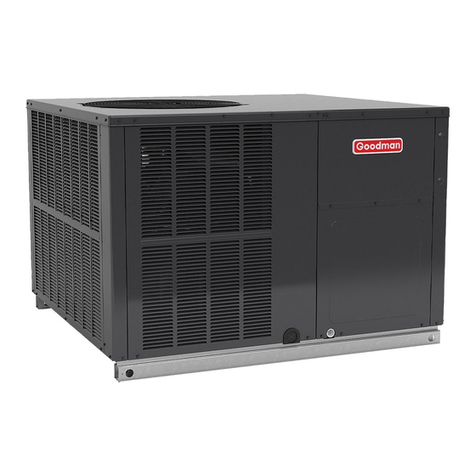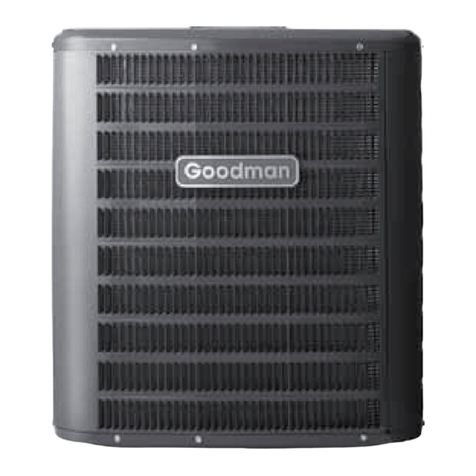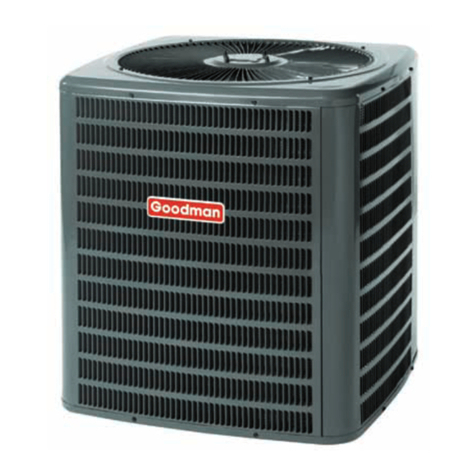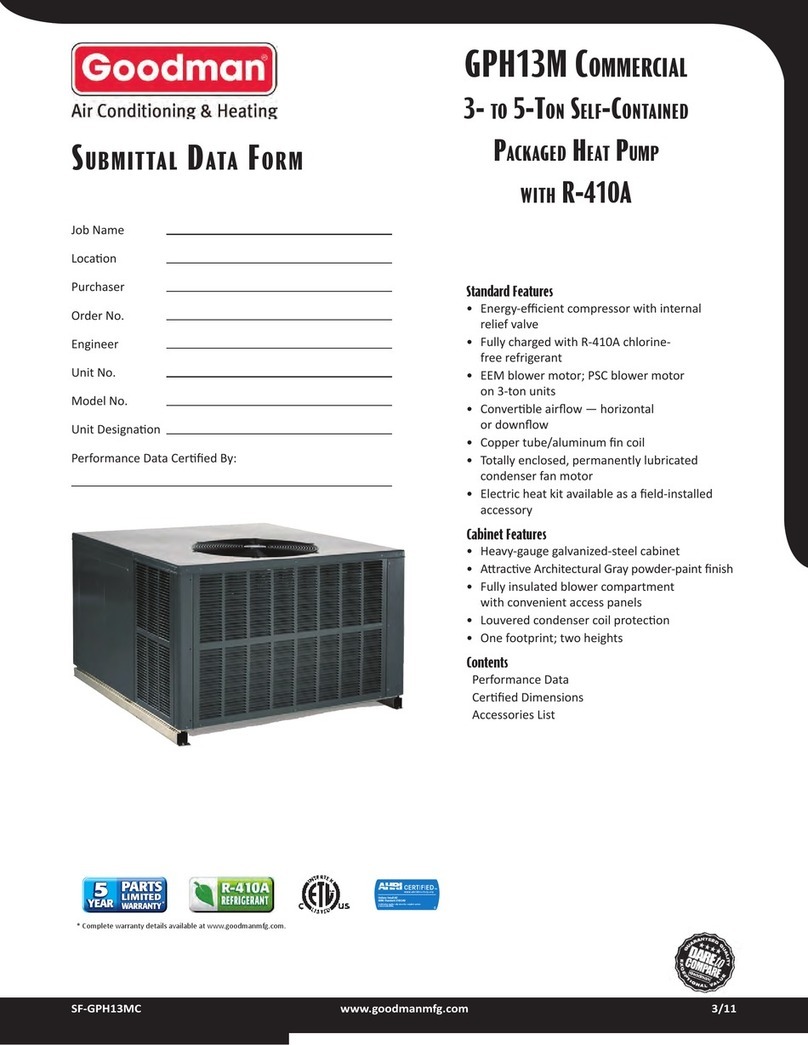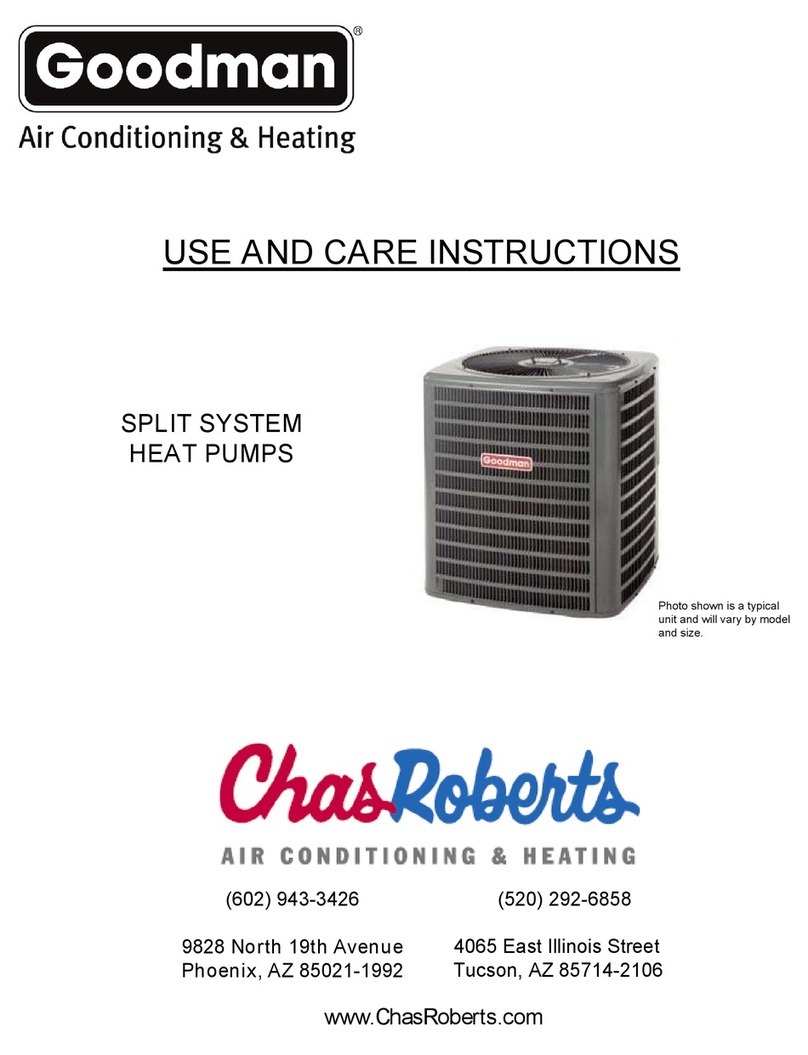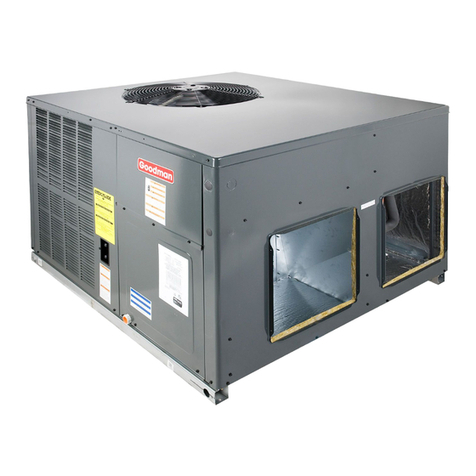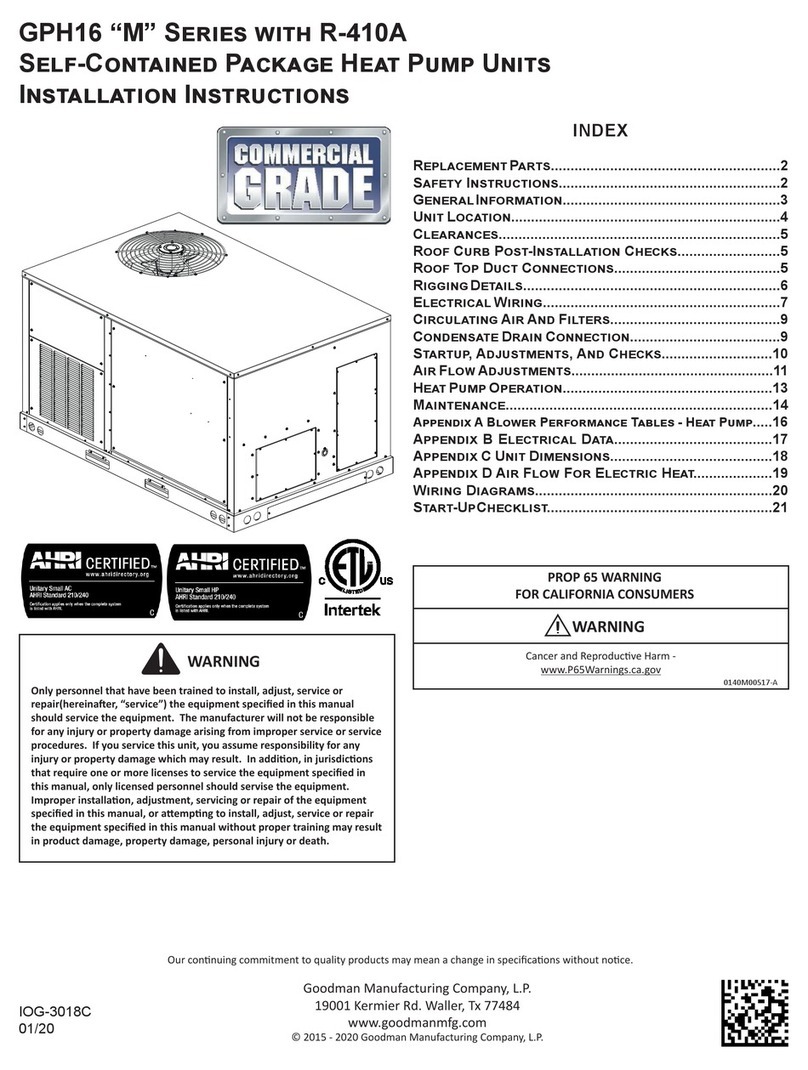
4
Where possible, drain as much residual compressor oil
from existing systems, lines, and traps; pay close attention
to low areas where oil may collect. NOTE: If changing
refrigerant types, ensure the indoor coil and metering
device is compatible with the type of refrigerant being used;
otherwise, the indoor coil must be replaced.
If burying refrigerant lines can not be avoided, use the
following checklist.
1. Insulate liquid and suction lines separately.
2. Enclose all underground portions of the refrigerant
lines in waterproof material (conduit or pipe) sealing
the ends where tubing enters/exits the enclosure.
3. If the lines must pass under or through a concrete
slab, ensure lines are adequately protected and
sealed.
Torch heat required to braze tubes of various sizes is
proportional to the size of the tube. Tubes of smaller size
require less heat to bring the tube to brazing temperature
before adding brazing alloy. Applying too much heat to
any tube can melt the tube. Service personnel must use
the appropriate heat level for the size of the tube being
brazed. Note: The use of a heat shield when brazing is
recommended to avoid burning the serial plate or the nish
on the unit.
1. The ends of the refrigerant lines must be cut square,
deburred, cleaned, and be round and free from nicks
or dents. Any other condition increases the chance of
a refrigerant leak.
2. “Sweep” the refrigerant line with nitrogen or inert gas
during brazing to prevent the formation of copper-
oxide inside the refrigerant lines. The POE oils used
in R-410A applications will clean any copper-oxide
present from the inside of the refrigerant lines and
spread it throughout the system. This may cause a
blockage or failure of the metering device.
3. After brazing, quench the joints with water or a wet
cloth to prevent overheating of the service valve.
4. Ensure the lter drier paint nish is intact after
brazing. If the paint of the steel lter drier has
been burned or chipped, repaint or treat with a rust
preventative. This is especially important on suction
line lter driers which are continually wet when the
unit is operating.
Do NOT make nal refrigerant line connection until plugs
are removed from refrigerant tubing.
WARNING
WARNING
Using dry nitrogen, pressurize the system to 450 PSIG.
Allow the pressure to stabilize and hold for 15 minutes
(minimum). If the pressure does not drop below 450 PSIG
the system is considered leak free. Proceed to system
evacuation using the Deep Vacuum Method. If after 15
minutes the pressure drops below 450 PSIG follow the
procedure outlined below to identify system leaks. Repeat
the Standing Pressure Test.
WARNING
WARNING
Leak test the system using dry nitrogen and soapy
water to identify leaks. If you prefer to use an electronic
leak detector, charge the system to 10 PSIG with the
appropriate system refrigerant (see Serial Data Plate
for refrigerant identication). Do not use an alternative

